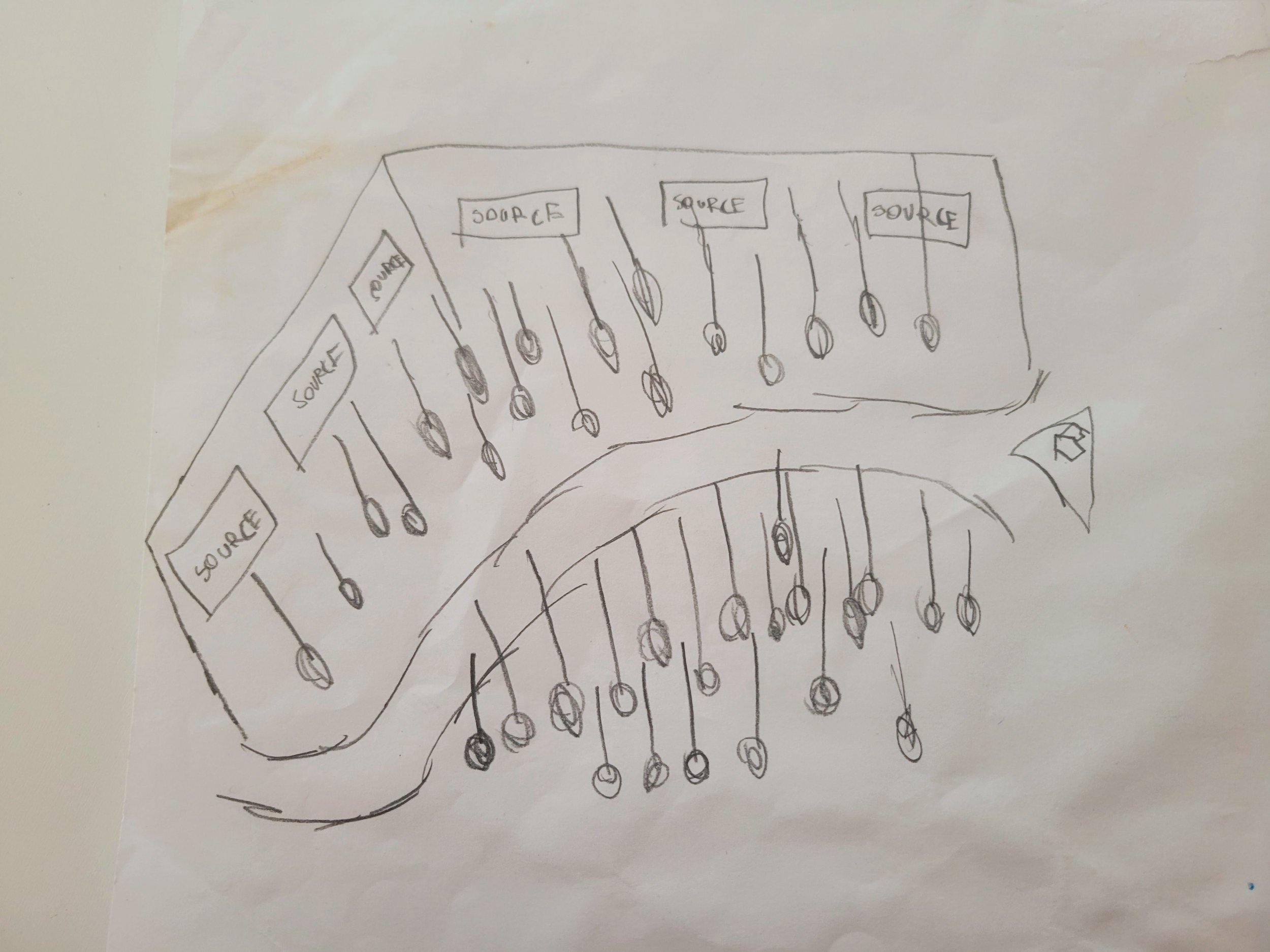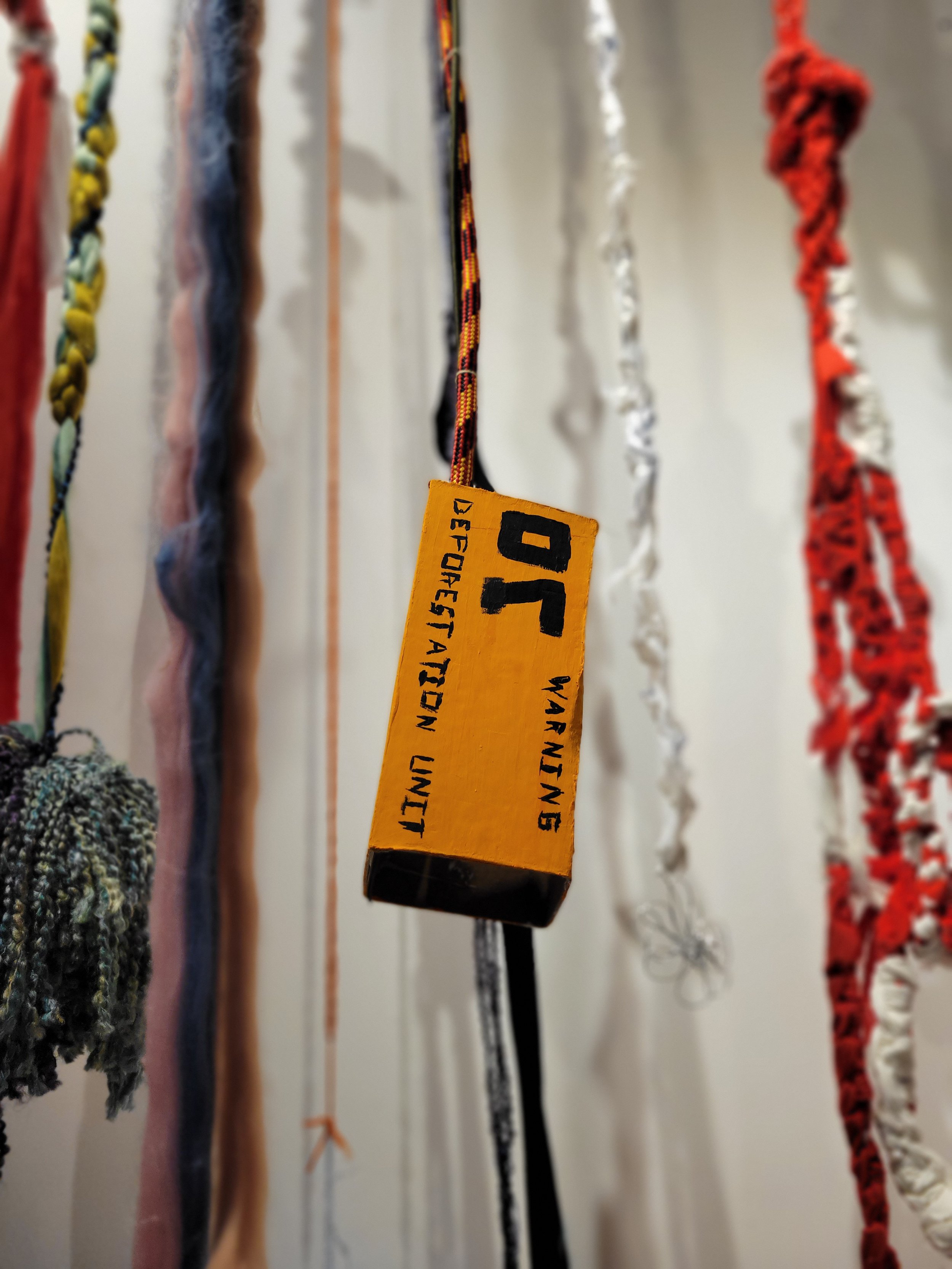CRE8 Students & their Material Forest
Check out this article in the 2023 Spring edition of Splatter Magazine!
The Material Forest, created by CRE8 2nd year students, on display at the Museum of Museums from March-April, 2023.
Imagine you’re walking down the street and you see a plastic bag, trampled down into the asphalt by hundreds of muddy feet. You look at it and think, “Where did this come from? How was it made? Why did it end up here?” And then you look around and see a piece of wire discarded in a bin, destined for the landfill. You ask yourself, “What could this wire be instead?”
These are the questions that Coyote’s CRE8 students asked themselves when making their Material Forest. Coyote is an inclusive arts education space in Seattle for kids ages 10-15 with a mission to “spark creativity in young people, putting tools in their hands to build skills and forge their futures.” At Coyote, students can register for a 20-hour studio class during school breaks or weekends and learn mediums typically reserved for adults, such as woodworking, welding, cooking, digital animation, music production, fashion design & sewing, photography, weaving, visual art, performance art, and so much more. Every class is pay-what-works-for-you, which allows students from any socioeconomic background to participate. These classes ask students what they want to create and then provide them with the tools and skills necessary to achieve it. If a student tries a Studio Coyote class and realizes that they want an even deeper dive into their creative potential, then it’s time for them to look at programs like CRE8.
To be a part of the three-year CRE8 program, students apply at the end of 5th grade, with the hopes of spending their 6th-8th grade years in a cohort of 13 creatives with an unquenchable thirst and artistic curiosity. Throughout these three years, CRE8 students explore a variety of different mediums, then start building public art projects, and finally create their own personal showcase.
Concept sketch by Haroldo - inspiration for the Material Forest’s final form.
This Material Forest is one of the public art projects that 2nd year CRE8 students Ari, Eloise, Haroldo, Isabella, Logan, and Satchel worked tirelessly to create. They were led by fiber and weaving artists MaryJane Ides and Allyce Wood, who invited the students to come up with an idea for a group fiber project. Each student brainstormed an idea, such as a felted landscape or a group quilt. Haroldo was very interested in investigating material sources. At one point, he had the idea of having maps or diagrams on the wall, showing where each material in the installation came from. His concept sketch was the seed from which the Material Forest grew.
Following the original inspiration for the idea, Ides and Woods encouraged the students to think first about what types of materials they see all around them. Then, they were asked to identify where these materials came from. How were they harvested? What was the fabrication process? What were their intended uses? They were invited to imagine a different use for these materials, one which would give them new life and meaning.
They created a basic formula of a “dangle” (a long hanging cord which could be knotted, woven, or crocheted) and a “dangler” (a weightier pendulum of accumulated material) to present the materials in an innovative new form. In creating their dangles, the artists explored methods of weaving, knotting, and binding, including macrame, traditional cedar bark 2-ply rope making, and finger crocheting. They used materials like petroleum-based plastic bags, acrylic yarn, recycled cotton, aluminum wire, and upcycled fabric, all the while investigating these materials’ origins and eventual impacts on our world.
Throughout this process, the students became more adept at creating their dangles, going from taking 3 hours to make one, to 30 minutes for each. One dangle was even created in the last 5 minutes of a meeting. They were done individually and collaboratively, with personality and purpose shining through. Several of them are focused on shape, color, and size, while others are focused on messages like deforestation and environmental sustainability. No two dangles are alike. When you look at or walk through them, you are indeed reminded of a forest of many different trees, each one breathing a life of its own.
This forest now lives temporarily in the Emergence Room at the Museum of Museums (MoM), which is dedicated to showcasing art by young people in the greater Seattle area. Exhibit spaces like these are an integral part of the journey for young artists, who want to know if this work is a viable professional opportunity, or that people will want to hear what they have to say. Spaces like MoM tell them that it is, and they do.
You can view the Material Forest on display at the Museum of Museums until April 30th, 2023. We invite you to stop by and explore the possibilities (and origins) of the materials around us.






